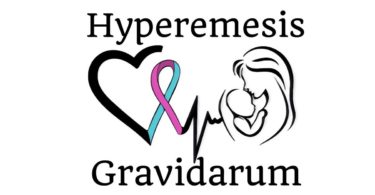ABSTRACT
Now a days the most commonly seen conditions during postnatal care are postpartum blues and postpartum depression. One is acute in nature and other one is chronic in nature. Though both these conditions are seen previously, now the incidence is comparatively more than the previous years. The postpartum blues are more common in women than the postpartum depression. Postpartum blues resolve itself within few days. Where as the postpartum depression takes longer time with therapeutic measures. Here the homoeopathic medicine plays an effective role in treating postpartum depression, along with psychological counseling. As homoeopathy considers the patient as a whole it can provide an effective treatment in such conditions.
KEYWORDS
Postparum Blues, Postpartum Depression, Homoeopathy
INTRODUCTION
Postpartum Blues
It is a transient state of mental illness observed 4-5 days after delivery and lasts for few days.
• Nearly 50% of the post partum women suffer from the problem.
• Manifestations are depression, anxiety, tearfulness, insomnia, helplessness and negative feelings towards the infant.
• No specific metabolic or endocrine abnormalities have been detected.
• But lowered tryptophan level is observed.
• It suggest alterted neuro transmitter function.
• Treatment is reassurance and psychological support by the family members.
Postpartum Depression
It is more gradual in onset over the first 4-6 months following delivery or abortion or it may be the after effects happen during her antenatal period.
• It is observed in 10-20% of mothers.
• Changes in the hypothalamo-pituitary-adrenal axis may be a cause.
• Manifested by loss of energy and appetite, insomnia, social withdrawal, irritability and even suicidal attitude.
• Risk of recurrence is high in subsequent pregnancies.
• Treatment is started early with general supportive measures and medications.
HOMOEOPATHIC APPROACH
AURUM METALLICUM: Depression feels like an inescapable black cloud. Very hard on themselves, feel that they should have given birth ‘better’. Feel worthless, will do what is required of them but joylessly. Constant feeling that they are neglecting their duty. All symptoms are aggravated at night.
CIMICIFUGA RACEMOSA: Profound gloominess and sadness. Feels trapped. Will talk incessantly about the birth with grief and disappointment, jumping from one aspect to another. May have had a long, exhausting labour with over- sensitiveness to the pain and significant after pains.
PULSATILLA NIGRICANS: Great sadness and feeling of loss after the birth. May have a lot of intervention because of position of the baby. Very sensitive, vulnerable and insecure- abandonment issues. Wildly fluctuating moods. Craves attention and may manipulate to get it.
IGNATIA AMARA: Lots of spasmodic sobbing and sighing, may even alternate laughing and crying. Wretched when she realizes that the fantasy of having a baby does not match up to the reality both in terms of birth and post-partum. Grief(++) over disappointed expectations.
SEPIA OFFICINALIS: Complete detachment from partner and baby. Loss of freedom issues, may want to run away from it all. Flashes of anger. Tears(++) especially when recounting her story. May have a difficult pregnancy as well as birth.
NATRUM MURIATICUM: Introverted in depression. Will often not ask for help but rather try to manage it on her own, amelioration consolation. Crying in private(+), will hold on to the distress of a difficult labour and relieve it.
ANACARDIUM ORIENTALE: Discouraged/ despair about the birth, blames everyone for her experience of birth. Very easily offended. Irresistible urge to curse and swear. Feelings of separation from the world. No confidence in her ability to care for the baby. Suspicious of help offered.
CONCLUSION
Homoeopathic treatment plays an effective role in postpartum blues and depression. During postnatal period, the mother and child is benefited with homoeopathic medicines. The medicines above listed are commonly indicated which is seen clinically.
REFERENCES
1. Dutta.D.C. Textbook of Obstetrics. 7th edition 2010, New central book agency (P) Ltd.
2. Lilienthal Samuel. Homoeopathic therapeutics. B.Jain publishers Pvt.Ltd.
3. Boericke William. Pocket Manual of Homoeopathic Materia Medica. Indian books and periodicals publishers (P) Ltd; 2010
4. Stewart DE, Robertson E, Dennis CL, Grace SL, Wallington T. Postpartum depression: literature review of risk factors and interventions. Toronto: University Health Network Women’s Health Program; 2003. Available from: http://www.who.int/mental_health/prevention/suicide/lit_review_postpartum_depression.pdf
5. Prakash M, Komal PT, Pragna S. Sociocultural bias about female child and its influences on postpartum depressive features. Int J Sci Res. 2013;2(12):462–3.





